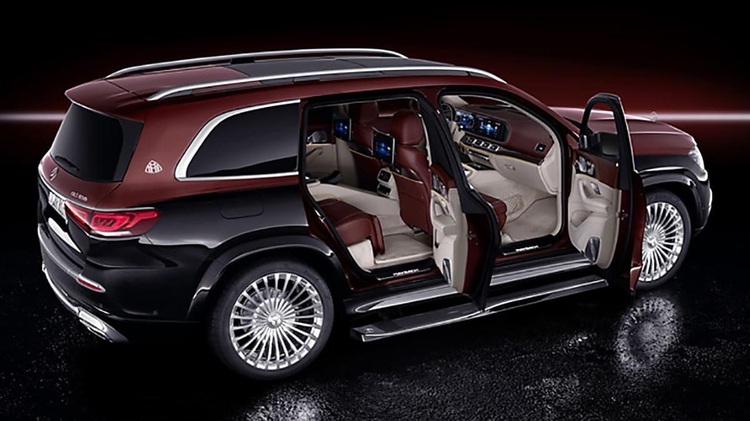Senior-Friendly SUV Features and Considerations for Older Drivers
As drivers age, their automotive needs evolve, making certain SUV features increasingly important for comfort, safety, and ease of use. Modern SUVs offer various technologies and design elements specifically beneficial for senior drivers, from intuitive controls to accessibility features that enhance the driving experience.

User-friendly controls and simple tech for seniors
Senior drivers benefit significantly from SUVs equipped with straightforward, intuitive control systems. Large, clearly labeled buttons replace complex touchscreen menus in many senior-friendly models. Physical knobs for climate control, radio volume, and other frequently used functions eliminate the need to navigate through multiple digital screens while driving.
Voice command systems have become particularly valuable, allowing drivers to adjust settings, make calls, or input navigation destinations without taking their hands off the wheel. Many manufacturers now design their infotainment systems with larger fonts, high-contrast displays, and simplified menu structures that reduce confusion and improve usability for older adults.
Essential technologies for elderly drivers in SUVs
Modern SUVs incorporate numerous safety technologies that particularly benefit senior drivers. Blind spot monitoring systems use visual and audible alerts to warn of vehicles in adjacent lanes, compensating for reduced peripheral vision that may come with age. Rear cross-traffic alert systems help when backing out of parking spaces by detecting approaching vehicles from either side.
Automatic emergency braking can prevent or reduce the severity of collisions by detecting obstacles and applying brakes when the driver doesn’t respond quickly enough. Lane departure warning systems alert drivers when they unintentionally drift from their lane, while lane keeping assist gently steers the vehicle back into position.
Adaptive cruise control maintains a safe following distance automatically, reducing the mental workload during highway driving. Parking assist features, including 360-degree cameras and automatic parking systems, make maneuvering in tight spaces significantly easier.
Maintenance and reliability concerns for older drivers
Reliability becomes increasingly important as drivers age, particularly for those on fixed incomes or with limited mobility to handle frequent repairs. Certain SUV brands have established strong reputations for dependability and lower maintenance costs over time.
Regular maintenance schedules vary significantly between manufacturers, with some requiring service every 5,000 miles while others extend intervals to 10,000 miles or more. Extended warranty options provide additional peace of mind, though costs and coverage terms differ substantially between providers.
Many dealerships now offer senior-specific service programs, including transportation to and from service appointments, priority scheduling, and detailed explanations of recommended maintenance. Some manufacturers provide complimentary maintenance for the first few years of ownership, which can significantly reduce ongoing costs.
| SUV Model | Starting Price | Key Senior Features | Reliability Rating |
|---|---|---|---|
| Toyota Highlander | $35,000 | Large buttons, excellent visibility | Above Average |
| Honda Pilot | $37,000 | Simple controls, spacious interior | Above Average |
| Subaru Ascent | $33,000 | Standard safety tech, easy entry | Average |
| Mazda CX-9 | $35,000 | Intuitive infotainment, comfortable seats | Above Average |
| Hyundai Palisade | $34,000 | Comprehensive warranty, user-friendly tech | Average |
Prices, rates, or cost estimates mentioned in this article are based on the latest available information but may change over time. Independent research is advised before making financial decisions.
Door height and ease of entry/exit in senior-friendly SUVs
The physical design of SUV doors and seating positions significantly impacts accessibility for senior drivers. Optimal door height allows easy entry without excessive climbing or awkward positioning. Many SUVs now feature lower step-in heights compared to traditional truck-based models, making them more accessible.
Wide door openings provide ample space for entering and exiting, particularly important for individuals with mobility limitations or those using walking aids. Some manufacturers offer powered running boards that automatically extend when doors open, providing a stable step surface.
Seat height plays a crucial role in comfort and safety. Seats positioned too low require significant effort to exit, while overly high seats may cause difficulty reaching pedals or seeing over the dashboard. Adjustable seat height with memory settings allows drivers to find their optimal position easily.
Grab handles positioned strategically around door frames and on the dashboard provide additional support during entry and exit. Some SUVs feature illuminated door sills and courtesy lighting that activates when doors open, improving visibility in low-light conditions.
Power-adjustable seats with lumbar support help maintain proper posture during longer drives, reducing fatigue and discomfort. Heated seats provide therapeutic benefits for individuals with arthritis or other joint conditions.
When selecting an SUV, senior drivers should physically test entry and exit procedures at dealerships, ensuring the vehicle meets their specific mobility needs. Consider bringing any mobility aids typically used to verify compatibility with the vehicle’s design.




